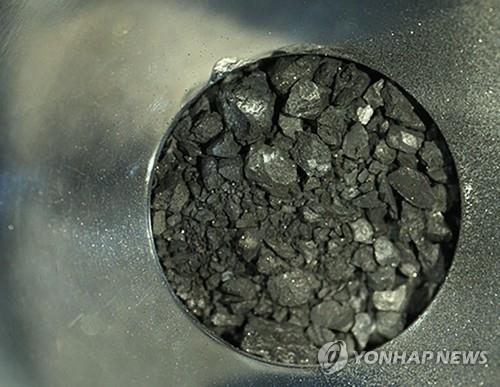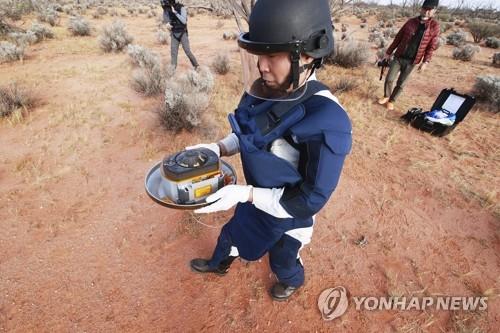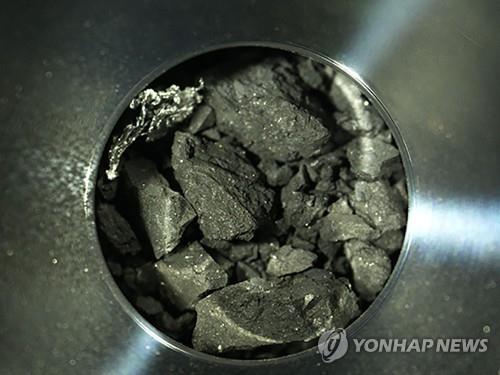Difference from the first sample of the size of a grain of sand on the surface Share after research in Japan
–
[JAXA/AFP = 연합뉴스/ 재판매 및 DB 금지]
–
(Seoul = Yonhap News) Reporter Eom Nam-seok = The underground sample collected by the Japanese probe’Hayabusa 2’by creating an artificial pool in the asteroid Ryugu (龍宮) was found to be larger and harder than the sample of the thickness of sand grains collected from the surface.
According to foreign media such as the Associated Press, the Japan Aerospace Research and Development Organization (JAXA) has released a second sample of Ryugu, which is shaped like a piece of charcoal that reaches a maximum of 1 cm and is not broken when transferred to another container.
Hayabusa 2 landed twice while orbiting the orbit of Ryugu, more than 300 million kilometers away from the Earth, and collected each sample. On the 6th, the capsule containing the sample was dropped in the remote desert of Australia.
JAXA brought it to the Space Science Research Institute in Kanagawa Prefecture, where it was opened, and last week released a sample containing many grains of blackish sand. It is estimated that this sample was collected by Hayabusa 2 when it first landed on the surface of Ryugu in February of last year. .
Hayabusa 2 then fired a softball-sized metal bullet of 2 kg at a speed of 2 km per second near the equator in Ryugu to create a crater, and landed there in July to collect samples.
The artificial pool is about 14.5m in diameter, and the samples taken here were under the surface, so it is believed that the material was not exposed to the space environment including cosmic radiation.
Dr. Tomohiro Usu, professor of planetary science at JAXA explained that the size difference between the first and second samples may be due to the difference in the hardness of the bedrock. “The bedrock at the second landing site was harder, so a larger fragment was encapsulated. There is a possibility,” he said.
The secondary sample contains a silver metallic substance, which is aluminum from the probe, which was predicted to enter during the sampling process, and does not affect the analysis of the sample, the Japanese researchers said.

–
[JAXA/AFP = 연합뉴스/ 재판매 및 DB 금지]
–
JAXA is still conducting initial investigations on samples collected from Ryugu, and full-scale research is expected to take place six months after the inventory work is completed. The samples were first studied in Japan, and some are said to be provided to space agencies in other countries, including NASA.
Scientists expect to broaden our understanding of the origins of life on Earth as well as the formation of the solar system through samples of asteroids that retain the material from the formation of the solar system about 4.5 billion years ago.
NASA’s asteroid probe’OSIRIS-REx’ is also returning to Earth after successfully collecting samples from Benu, about 330 million km away in October, and is expected to arrive on Earth in September 2023.
Having successfully delivered the Ryugu sample, Hayabusa 2 set out on a new 11-year exploration mission for another small asteroid, ‘1998KY26’. This asteroid is only about 30m in size, but it is a near-earth celestial object discovered in the wind passing by about 800,000 km from Earth. It is expected to contribute to the research to prepare a defense strategy against asteroids flying toward the Earth.

–
[JAXA/AP=연합뉴스/ 재판매 및 DB 금지]
–
<저작권자(c) 연합뉴스,
Unauthorized reproduction-prohibition of redistribution>
2020/12/26 12:06 sent
–


